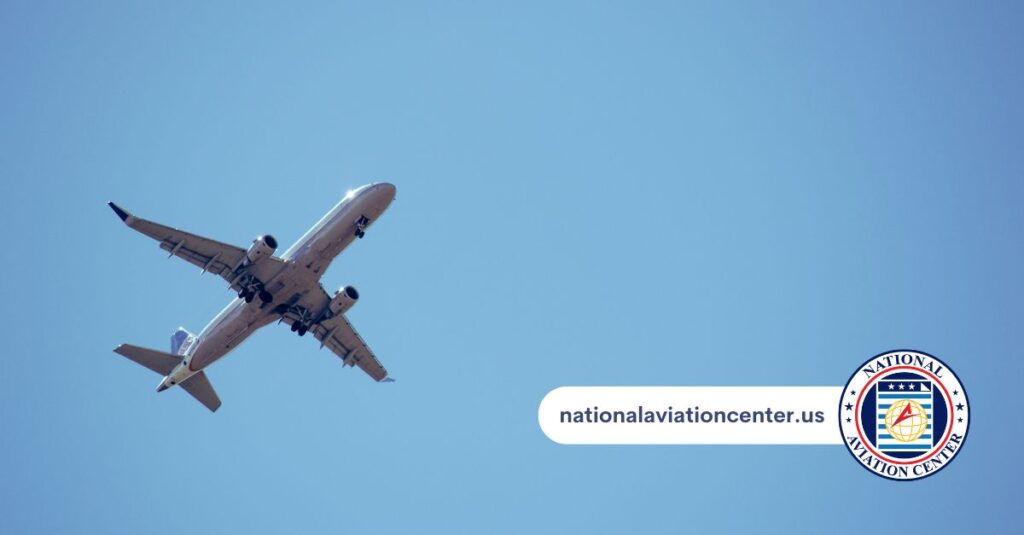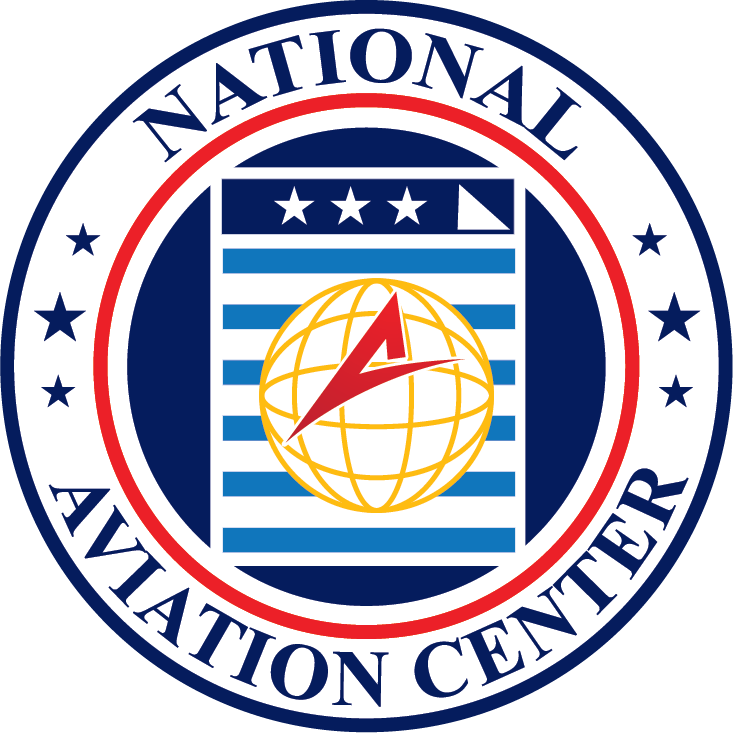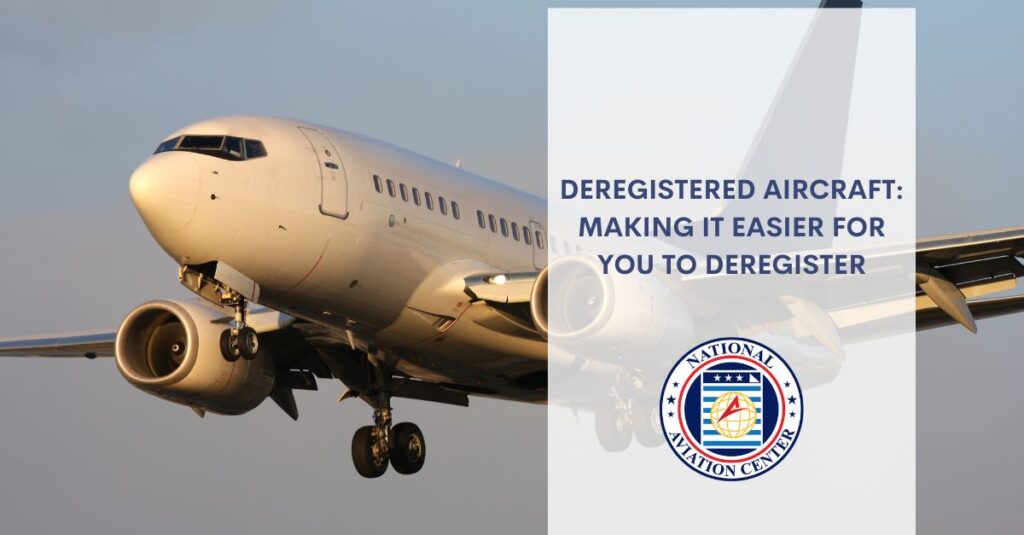For many aircraft owners, there comes a time when an owner needs to remove their plane from the FAA’s active registry. The process of making yours a deregistered aircraft may be necessary for several reasons, including selling the aircraft to a foreign buyer, scrapping it, or in the unfortunate event of its destruction. At the National Aviation Center, we specialize in simplifying this and other FAA documentation processes for aircraft owners across the country.

Why You Might Need to Make Yours a Deregistered Aircraft
The FAA aircraft registry is the official record of all civil aircraft in the United States. Maintaining an active registration is a legal requirement for operation. However, several common scenarios legally require an owner to request the cancellation of their aircraft’s registration. Failing to do so can lead to complications for both the former and potential new owners.
Selling an Aircraft to a Foreign Entity
One of the most frequent reasons for deregistered aircraft is the sale of a plane to a foreign buyer. The FAA registry is for U.S. aircraft only; once transferred to a foreign entity, it becomes ineligible for U.S. registration.
The new owner must register the aircraft in their country and provide proof it was removed from the previous registry.
The seller handles FAA deregistration to ensure a smooth ownership transfer and legal registration for the buyer in their jurisdiction.
When an Aircraft is Scrapped or Destroyed
Aircraft, like any other machine, eventually reach the end of their operational life. When a plane is permanently taken out of service to be scrapped or parted out, it must be deregistered. The same applies in the unfortunate case that an aircraft is destroyed in an accident.
In these cases, the aircraft cannot fly anymore, making its registration invalid and requiring official deregistration from the FAA.
The owner is obligated to notify the FAA of the aircraft’s status so the registry can be updated accordingly. This action finalizes the aircraft’s U.S. registration and prevents future administrative problems associated with its N-number or ownership records.
The Owner Is No Longer a U.S. Citizen
Eligibility for U.S. aircraft registration is tied to citizenship status. If an individual aircraft owner relinquishes their U.S. citizenship, they are no longer eligible to keep their aircraft on the FAA registry. In this instance, the owner must deregister the aircraft.
This situation might also apply to corporations or partnerships if their ownership structure changes in a way that no longer meets the FAA’s citizenship requirements. Keeping the registry accurate is paramount, and changes in owner status are a key trigger for updating an aircraft’s registration records.
The Consequences of Failing to Deregister
Properly managing your aircraft documentation doesn’t end after the initial purchase. Just as you handle your FAA registration renewal on time, you must also handle deregistration when required. Ignoring this crucial step can lead to significant penalties and administrative headaches that can affect you for years.
The FAA takes the accuracy of its registry very seriously, and non-compliance is not treated lightly.
Legal Penalties and Fines
The FAA has the authority to impose civil penalties for failing to comply with its regulations. If you sell your aircraft to a foreign buyer or if it’s been scrapped, and you do not complete the deregistration process, you could face substantial fines. You remain the owner of record in the eyes of the FAA, making you responsible for an aircraft you no longer possess.
These penalties emphasize why completing your deregistered aircraft process correctly is essential for compliance and protection.
Continued Liability
Perhaps one of the most significant risks of not deregistering an aircraft is continued liability. As long as your name is on the registration, you can be held legally and financially responsible for whatever happens involving that aircraft. If a plane you sold to a foreign buyer is involved in an accident or an illegal activity, authorities may look to the registered owner—you.
Similarly, if an aircraft you thought was scrapped is somehow made airworthy again and flown illegally, the liability could trace back to you. Proper deregistration severs these ties and protects you from future claims.
Complications for Future Transactions
Failing to deregister an aircraft can also create a tangled mess for the new owner, which can, in turn, circle back to cause problems for you. A foreign buyer cannot register the aircraft in their country until it is officially removed from the FAA registry. This delay can stall the sale, lead to contractual disputes, and damage your reputation.
A clean and complete transaction includes providing all necessary documentation, and proof of deregistration is a key piece of that puzzle. Ensuring a smooth process for the buyer is part of a seller’s due diligence.
How We Make Deregistration Simple
Navigating FAA paperwork can often feel complex and overwhelming. The forms, regulations, and submission processes can be confusing for even experienced aircraft owners. At the National Aviation Center, our mission is to remove this burden from your shoulders.
We have developed a streamlined, user-friendly platform that makes managing your aircraft registration needs—including deregistration—straightforward and secure.
Simplified Online Forms
We have taken the official FAA forms and transformed them into intuitive online documents. Our platform guides you through each section, ensuring you fill out all the necessary information correctly the first time. You don’t have to decipher complicated government jargon or worry about missing a critical field.
We ask for the information we need in plain language, making the process of requesting deregistration feel less like a bureaucratic chore and more like a simple administrative task. Our system is designed to save you time and prevent common errors that lead to delays.
A Secure and Efficient Process
Once you complete the required information on our site, we take it from there. Our team meticulously reviews your application to ensure accuracy and completeness before submitting it to the FAA. We understand the specific requirements for each type of documentation, including the nuances of deregistration requests.
The FAA provides specific guidelines, such as those found under 14 CFR § 47.47 regarding the cancellation of registration. Our expertise ensures that your submission aligns with these federal regulations, minimizing the risk of rejection or processing delays. We act as your knowledgeable partner, handling the direct interaction with the FAA on your behalf.
Comprehensive FAA Documentation Services
Our team supports all FAA processes, including deregistered aircraft filings, renewals, and ownership transfers.. The National Aviation Center is your one-stop solution for a wide range of FAA documentation needs. Whether you need to process an initial aircraft registration, handle a transfer of ownership, or complete your FAA registration renewal, our platform is designed to make it easy.
We help you manage the entire lifecycle of your aircraft’s documentation, providing a consistent and reliable resource you can turn to for any registration-related matter. Our goal is to give you peace of mind, knowing that your paperwork is being handled correctly and efficiently every time.
Managing the documentation for your aircraft is a critical aspect of ownership. When the time comes to deregister your plane, trust the National Aviation Center to help you navigate the process with ease and confidence.
Let us handle the complexities of FAA paperwork so you can focus on what’s next. Visit our site today to see how we can assist you with all of your FAA documentation requirements.




